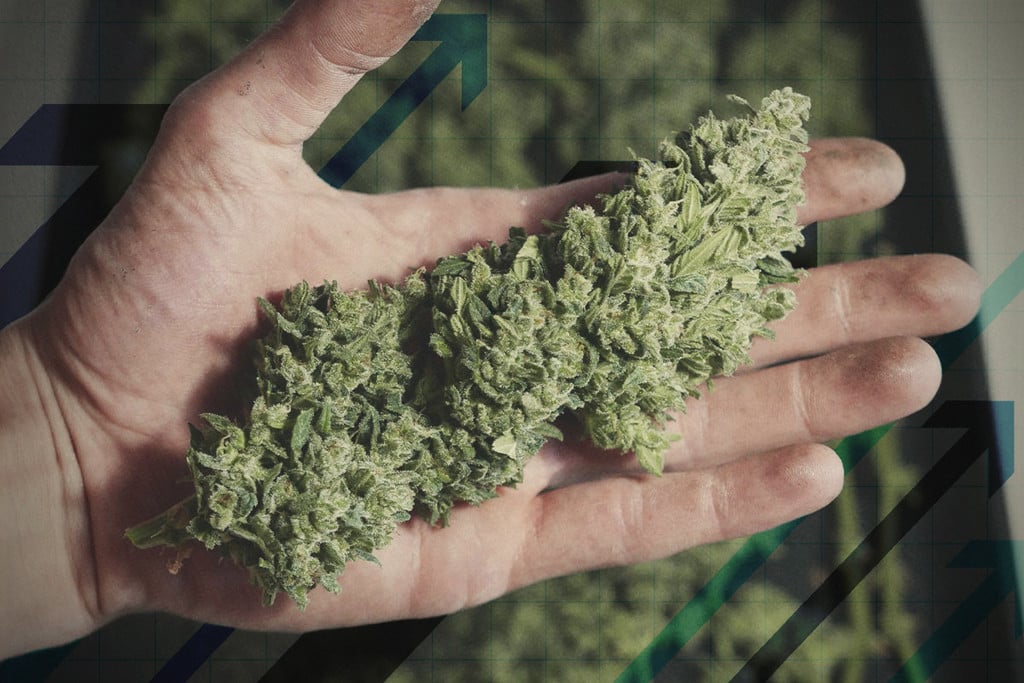.

Does Music Stimulate Your Cannabis Plants Growth?
Music is a powerful force. It can alter our mood and sway our emotion. It also produces some profound effects in plants, potentially boosting their growth and yields.
Contents:
Music has a profound effect on the human mind. Certain songs can make you start welling at the eyes, while others can give you that push to hit a new personal record at the gym. But the sound waves generated by music don't just affect humans.
Music—and sound in general—appears to create profound changes in certain species of plants—from increasing yields to boosting immunity. Does this mean you should start blaring Mozart in your cannabis garden? Or perhaps your herb patch would prefer the soothing tones of Bob Marley?
Continue reading to see if (and how) music can increase the productivity and health of your cannabis plants.
CAN PLANTS HEAR?
You've probably noticed that your cannabis plants don't have ears. However, this easy observation doesn't rule out the fact that sound can still influence them on a biological level. Humans are able to detect sound thanks to specialised cells—mechanoreceptors—in the ear.
Put simply, sound is the vibration of molecules through a certain medium, be that solid, liquid, or gas. These vibrations travel through a medium by compressing molecules in the air. When these waves hit the human ear, mechanoreceptors respond to the change in pressure and send signals to the brain.
How plants "hear" music and sound remains unknown. However, a likely theory suggests that plant mechanoreceptors sense the change in pressure as sound waves bash into them and rush past them.

WHY DO PLANTS NEED TO HEAR?
This ability to detect sound allows plants to experience the outside world and act accordingly when trouble arrives. Far from inert green masses that blow in the wind, plants are incredibly aware of their surroundings.
The sound of a caterpillar munching on a plant's leaves will cause specimens to ramp up production of defensive chemicals designed to deter attackers. What's more, plants can differentiate between acoustic energy that signifies a threat and sounds from non-threatening sources.
Research published in the journal Plant-microbe-animal Interactions demonstrates how plants boost the production of glucosinolate[1] and anthocyanin after being exposed to the vibration of a munching caterpillar.
Sound waves not only influence plants to bolster their defences; acoustic energy also affects plant growth and germination. Experiments have shown a massive difference in tomatoes subject to specific tunes; those exposed grew to be twice the size[2] of the control group. Researchers even found certain tunes to inhibit viruses in tomato plants.
NOISE VS MUSIC
Noise and music are entirely different phenomena. Both are forms of sound, yet feature different structures. Noise has no rhythm or structure, such as traffic noise, heavy winds, or the footsteps of a crowd.
In contrast, music features harmonising tones, rhythms, and melodies. Musical notes have their own frequency and belong to a specific scale. Each scale features simple notes that sound pleasant when played together. When played in a specific sequence, simple notes of the same scale form a melody.
Songs also feature unique rhythms, tones, and instruments. When two instruments strike the same frequency, they create a reinforced sound wave known as a standing wave.
Research shows that both noise and music can alter the way plants grow. A study published in the Journal of Integrative Agriculture documents that sound waves between 0.1 and 1kHz increased the yield[3] of peppers by 30%, the harvest of cucumbers by 37%, and the output of tomatoes by 13%. The same paper states that sound waves decreased the instances of spider mites, aphids, grey mould, and late blight.
THE EFFECTS OF MUSIC ON PLANTS
Other scientists have explored the effects of music on plants, finding music to boost growth[3] and increase the presence of metabolites such as chlorophyll and starch. After comparing the influence of Indian classical music and rock music on China roses, researchers found the latter to stunt growth. Additional research found higher indole acetic acid levels[4] (a key growth hormone) in six varieties of vegetables after exposing them to musical acoustic frequencies.
Further studies found both rock music and classical music to exert a positive effect on seed germination, plant height, and number of leaves. In contrast, non-rhythmic traffic noises caused a negative effect. In contrast to this finding, another experiment found that any noise—when compared to silence—promoted growth in beans.
WILL MUSIC HELP YOUR CANNABIS PLANTS GROW?
Growers go to great lengths to increase the output of their cannabis plants—from tried and tested fertiliser potions to extremely powerful lights and automated climate control. But does a DJ controller and a loudspeaker have a place in your grow tent?
Although quite a few studies have observed the positive effects of music on plants, cannabis has yet to be tested. However, cannabis shares the same biological mechanisms of growth as many other plants.
It does make sense that music could give your yields a minor boost. But we simply don't know the best genre, how far to place the speakers, and how loud—or quietly—to blast your selected songs.
If you want to give it a try, prepare for some trial and error. Explore genres, volumes, duration, and tempo. Doing so will add a serious citizen science edge to your next grow, and you'll be watering and pruning your plants while nodding your head, at the very least.
- Plants respond to leaf vibrations caused by insect herbivore chewing | SpringerLink https://link.springer.com
- (PDF) Effect of Music on Plants – An Overview https://www.researchgate.net
- Advances in Effects of Sound Waves on Plants - ScienceDirect https://www.sciencedirect.com
- (PDF) Effect of Music on Plants – An Overview https://www.researchgate.net
- Effects of music acoustic frequency on indoleacetic acid in plants https://agris.fao.org






































